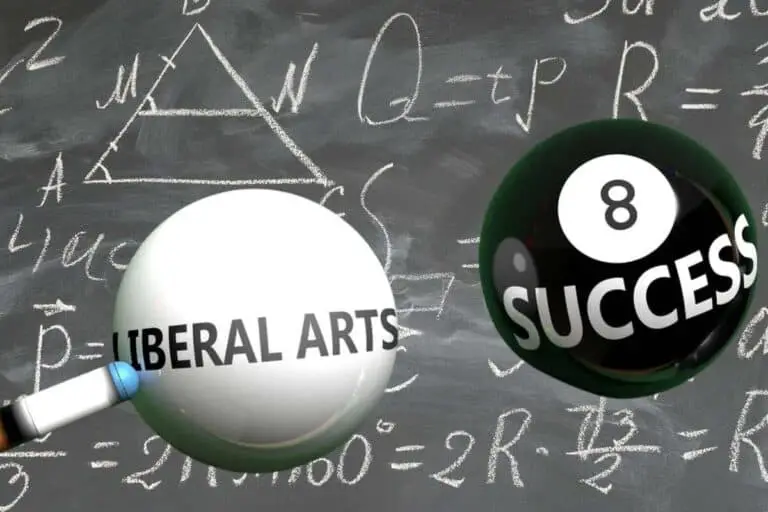Is AP Computer Science Principles A Hard Course?
There are many options for college credit to choose from. Going off the name alone, the AP Computer Science Principles (CSP) course sounds like a complicated subject, but is it hard?
AP Computer Science Principles isn’t hard, because it’s an introductory computer science course. Students with no prior knowledge of the subject nor any knowledge of coding languages can take the course. Assessments are also based on classes taken during the program.
We’ll look at what you need to know to succeed in CSP and what the assessments will require. We’ll consider the pros and cons of the course and whether it’s a good fit for your future.

Skills and Equipment Needed for AP Computer Science Principles
CSP doesn’t require any special skills or equipment to study. You also don’t need familiarity with coding or knowledge of coding languages to take the course because some of the programs used in CSP simulate coding without remembering lists of commands.
This course is designed by the National Science Foundation and the College Board to act as an introduction to computer science. CSP is also meant to appeal to people through the exploration of problem-solving using technology.
Source: NPR
The assessments in this subject are based entirely on the material you’ll learn in CSP, so you don’t need to bring any outside knowledge in. This is by design, as CSP is supposed to appeal to a broad range of students rather than scare them away with complex subject matter.
A great resource you can use is AP Daily, which is a video service offered by AP Classroom and it offers homework and course materials. This means you don’t have to worry that you won’t have enough material to read up on key concepts covered in CSP.
You’ll need access to a computer, but depending on the course activities you choose, you’ll likely only need one for a few hours per day. Given that one of the assessments involves audio-visual media, a computer that can play sound and render graphics is ideal.
The recommended prerequisite is a completion of a high school algebra course. However, as there’s no significant coding component to the course, there’s no requirement to perform math functions to do well in CSP.
Source: College Board
What Areas Are Covered in AP Computer Science Principles?
The main areas covered in AP Computer Science Principles are learning the basics of a selected programming language, data handling, and problem-solving.
On top of this, CSP helps you practice creative problem solving, employ practical use of technology to deal with large data sets, and learn about internet structures and essential cybersecurity issues.
There are many courses and websites full of materials you can examine to see the scope of a typical CSP program. These are in collaboration with major players in the private and public sector, so you know that these skills are directly relevant to future upskilling.
You can see a sample syllabus on the Khan Academy page. The topics introduce some significant areas of computer science to enable you to become familiar with them for a future college course or soft skill learning opportunity.
To see what you’re up against when taking CSP, Khan Academy will also supply mock exams and exam-specific preparation subjects.
Finally, if you don’t have a CSP course at your school, it’s possible to take it entirely online, which also opens CSP up to homeschooled students. While not necessarily endorsed by the College Board, most will cover the same material.
For the course framework, CSP is based on five major ideas, which include:
- Creative development
- Data
- Algorithms and programming
- Computer systems and networks
- Impact of computing
These are tested via several computational thinking practice areas. This includes designing and evaluating computational solutions as well as using algorithms. On top of this, abstractions, innovations, and responsible computing are all tested in the final multiple-choice exam.
Assessments for AP Computer Science Principles
CSP is assessed via a multiple-choice exam worth 70% and a performance task taking up the remaining 30%. The multiple-choice exam covers the five major ideas, whereas the performance task can take various forms.
The exam is 2 hours long and will focus on the five central ideas of the following:
- Creative development
- Data
- Algorithms and programming
- Computer systems and networks
- Impact of computing
The third idea of algorithms and programming can make up to 35% of the questions.
The idea of creative development could potentially only be worth 10% of the final exam. It would be best if you considered adjusting your study focus per these figures to get the best possible marks when revising.
Source: Geekedu
The exam is multiple choice but it does have a unique single select section that invites you to read a passage about a particular computational innovation. You then answer questions regarding the impact this innovation has had on the world.
The performance task is submitted via a document containing the code and a video of the code in operation.
Your code will have to demonstrate concepts learned in CSP. This includes instructions for input, the use of at least one list, and at least one procedure.
The video of your program running needs to show certain aspects to gain full marks, which includes input, functionality, and output. You don’t need to add any voice narration or other production values such as music.
To get an idea of what your project may look like, check out previous years’ entries. During Computer Science Education Week in December, you can view videos of past projects via the CSEDWeek website.
Previous examples included app development, simulated experiments, robots, and other custom programs. Some students have even continued to develop their ideas and prototypes after the completion of AP CSP.
This YouTube webinar from CollegeBoard has some insightful information that you may find helpful.
What Is Good About Computer Science Principles?
CSP is good due to its emphasis on the performance task. With the flexibility to choose what you do, you can work on your creative side and pick something that interests you. The course also presents seemingly impossible problems but shows you how to use technology to solve them.
This won’t only challenge you but help boost confidence in your ability to work through obstacles. However, what sets CSP apart is the broad nature of the areas it covers, which includes:
- Music
- Engineering
- Biology
- Many other varied topics
CSP thus introduces you to a broad overview of computer science and what it can do.
You’ll also work on your communication skills and consider the impact of technology on the world around you via CSP’s focus on the big ideas. This means that you develop your presentation skills, deal with technology, and implement solutions in your everyday life.
Source: Harvard University
Is AP Computer Science Principles Useless?
CSP may look like it’s not as good as the other AP Computer Science class, as the lack of focus on Java means it may not be viewed as favorable. But is CSP useless?
AP Computer Science Principles is not useless, as it’s meant as an introductory course to lead to more advanced classes at college. If your anticipated trajectory for school or work involves STEM, AP CSP is an excellent way to explore your interest in computer science.
CSP is assessed via a multiple-choice exam and a performance task. The multiple-choice exam covers the five major ideas, whereas the performance task can take various forms.
The things you learn in CSP will apply to various future educational paths and careers, such as graphic design and animation, engineering, music, software development, and many other paths.
It is also a great course to lead into AP Computer Science A. You can take both classes, and the College Board advises that you can take them in any order.
Fundamentally, CSP is still an AP class which means you get added credit. You can earn credits towards your degree at university while still in high school, in effect getting you closer to your degree before you’ve ever spent a day on a college campus.
The College Board has a list of colleges that’ll accept CSP to get you credit and it has over 950 colleges on it, covering all of the United States. This can net as many as eight credits, and some colleges only require a three or higher to be scored in the CSP overall grade.
CSP is also directly linked to over 48 majors and 130 careers. The field of STEM is vast, so a grounding in CSP could lead to engineering, astronomy, botany, and many other areas in between.
In terms of careers, CSP is directly dealing with skills at the core of many jobs that leverage the use of technology and so benefit from being future-proof. Learning to assess large volumes of data accurately or use computers to creatively solve complex issues will be helpful in almost any setting.
Computer science is often concerned about the use and analysis of data. CSP will help expose you to how data is employed to make decisions.
Source: United States Bureau of Labor Statistics
These data analysis techniques have also spread to sectors like medicine, political analysis, and economic forecasting. An understanding of how technology can enhance your abilities, prospects, and employability is gained from CSP.
Given the more critical role technology plays in society, computer science experience is set to be a must-have skill. It will teach students the seven foundations of computer science:
- Creativity
- Abstraction
- Data
- Algorithms
- Programming
- The internet
- Computer-based technology
Source: Black Enterprise
CSP opens options to many higher education opportunities. A degree in the various STEM subjects is needed for a high-paying career in the technology sector.
There’s also exclusive access to scholarships, paid internships, and other opportunities for those who take CSP. This means building relationships with future employers as well as an outstanding achievement to put on your resume.
STEM is shaping up to be one of the most notable sectors of employment for the future. Estimates vary, but STEM potentially comprises about ⅕ of the total United States workforce.
Source: Education Week
Conclusion
AP CSP is great for students at any ability level or interest in computer science. It introduces some vital computer science concepts and knowledge to build a solid foundation for other more advanced subjects.
It also acts as a primer on the possibilities of computer science. For students who were unaware or disinterested in computer science, the practical nature of CSP allows students who have no prior knowledge of coding to end up coding their projects.
Combining a multiple-choice exam and practical project allows both conceptual education about new ideas and hands-on learning.






